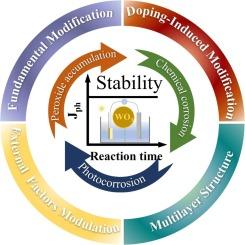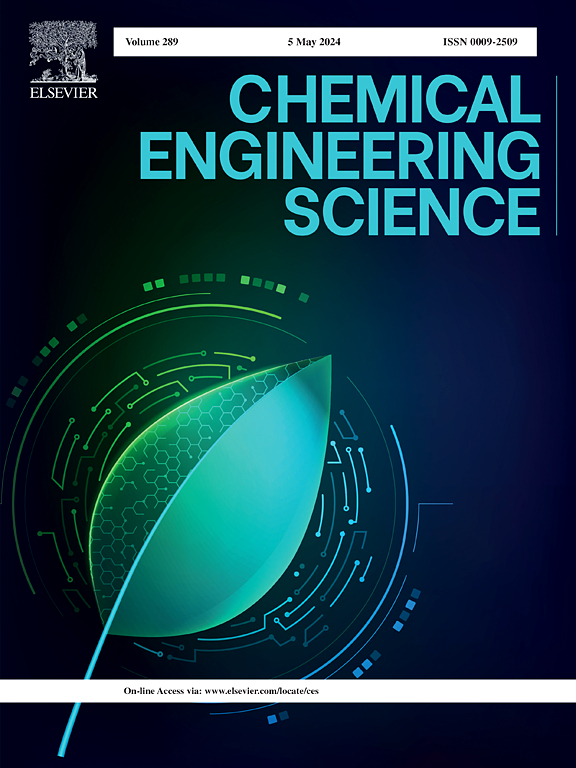提高用于水分离的 WO3 光阳极稳定性的策略:综述
IF 4.1
2区 工程技术
Q2 ENGINEERING, CHEMICAL
引用次数: 0
摘要
光电化学(PEC)分水技术是一种将太阳能转化为化学能的前景广阔的绿色技术,在清洁能源生产方面具有巨大潜力。然而,开发稳定的光阳极仍然是大规模应用的重大挑战。三氧化钨(WO3)具有合适的带隙、高效的电荷分离、环保和低成本等优点,是一种前景广阔的半导体。然而,WO3 并不稳定,主要原因是光腐蚀、化学腐蚀和过氧化物积累。本综述全面总结了针对基于 WO3 的光阳极的各种改性策略,包括基本改性、掺杂诱导改性、多层结构改性和外部因素改性。重点是评估这些改性策略对材料稳定性的影响,并评价其整体效果。本综述旨在为高稳定性 WO3 半导体材料的设计和制造提供有价值的见解,并探讨其在 PEC 水分离中应用的未来前景和挑战。本文章由计算机程序翻译,如有差异,请以英文原文为准。


Strategies for enhancing the stability of WO3 photoanodes for water splitting: A review
Photoelectrochemical (PEC) water splitting is a promising green technology for converting solar energy into chemical energy, with great potential for clean energy production. However, developing stable photoanodes remains a significant challenge for large-scale application. Tungsten trioxide (WO3) is a promising semiconductor due to its suitable bandgap, efficient charge separation, environmental friendliness, and low cost. However, WO3 is unstable, mainly due to photocorrosion, chemical corrosion, and peroxide accumulation. This review provides a comprehensive summary of various modification strategies for WO3-based photoanodes, including fundamental modification, doping-induced modification, multilayer structure modification, and external factors modulation. The focus is on assessing the impact of these modification strategies on material stability and evaluating their overall effectiveness. This review aims to provide valuable insights into the design and fabrication of highly stable WO3 semiconductor materials and explores the future prospects and challenges of their application in PEC water splitting.
求助全文
通过发布文献求助,成功后即可免费获取论文全文。
去求助
来源期刊

Chemical Engineering Science
工程技术-工程:化工
CiteScore
7.50
自引率
8.50%
发文量
1025
审稿时长
50 days
期刊介绍:
Chemical engineering enables the transformation of natural resources and energy into useful products for society. It draws on and applies natural sciences, mathematics and economics, and has developed fundamental engineering science that underpins the discipline.
Chemical Engineering Science (CES) has been publishing papers on the fundamentals of chemical engineering since 1951. CES is the platform where the most significant advances in the discipline have ever since been published. Chemical Engineering Science has accompanied and sustained chemical engineering through its development into the vibrant and broad scientific discipline it is today.
 求助内容:
求助内容: 应助结果提醒方式:
应助结果提醒方式:


